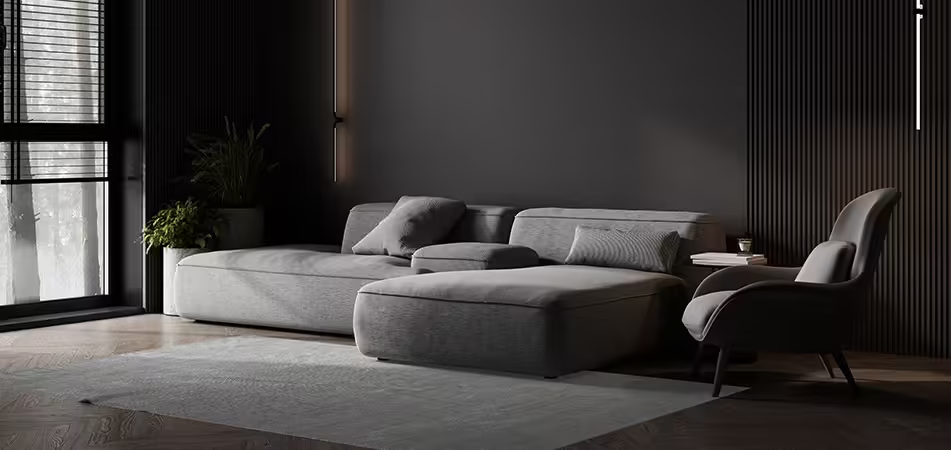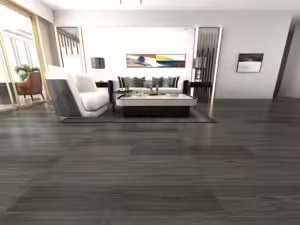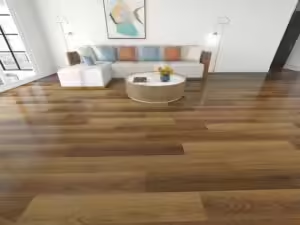Welcome to My Blog! 🌟
Before we dive into the content, let’s stay connected! Join me on my social media platforms where I share exclusive insights, engage with our amazing community, and post regular updates. Here’s how you can connect with me:
📘 Facebook: Follow Me on Facebook
Now, let’s embark on this journey together. I hope you find the content here insightful, engaging, and most importantly, valuable. Let’s explore, learn, and grow together! 🚀
Feel free to share your thoughts and feedback in the comments or on my social media—I’d love to hear from you! 😊
Table of Contents
Introduction

In recent years, waterproof flooring has evolved from a niche solution to a mainstream choice for homeowners and designers alike. Its durability, aesthetic versatility, and resistance to moisture make it an ideal option for various spaces, including kitchens, bathrooms, and basements. As we move into 2025, several innovative trends are shaping the future of waterproof flooring. This article explores four transformative trends that are redefining the industry.
NO 1. Luxury Vinyl Plank (LVP) and Tile (LVT) Dominance
Luxury Vinyl Plank (LVP) and Luxury Vinyl Tile (LVT) have surged in popularity due to their Luxury Vinyl Plank (LVP) and Luxury Vinyl Tile (LVT) are leading the way in the waterproof flooring revolution. Their rise in popularity can be attributed to their seamless blend of durability, affordability, and stunning design versatility. These floors replicate the visual appeal of natural materials—such as hardwood, marble, and ceramic—yet provide the superior water resistance essential for modern homes and businesses.
Why Are LVP and LVT So Popular?
One of the main reasons behind the increasing demand for LVP and LVT lies in their adaptability. Whether you’re designing a minimalist bathroom or a rustic-style kitchen, these waterproof flooring options fit effortlessly into the aesthetic. They are also ideal for commercial environments like retail stores, healthcare facilities, and restaurants, where both performance and appearance are vital.
Key Features:
- Realistic Designs: Thanks to cutting-edge photographic and printing technology, LVP and LVT now feature high-resolution images and detailed texturing that replicate wood grains, stone veins, and ceramic glazes with astonishing realism.
- Durability: These products resist dents, scratches, and spills, making them ideal for households with pets or children.
- Waterproof Core: Many LVP and LVT products come with rigid waterproof cores such as WPC (wood plastic composite) or SPC (stone plastic composite), which provide excellent stability and water resistance.
- Ease of Installation: DIY-friendly features such as click-lock mechanisms or peel-and-stick backing make installation fast and simple, even for non-professionals.
Market Insights:
According to a 2024 industry report, Luxury Vinyl Tile (LVT) led the waterproof flooring segment with a market share of 49.5%. This impressive figure underscores the widespread trust and investment in LVT across residential and commercial sectors. The trend is only expected to accelerate as newer, more innovative versions of LVP and LVT hit the market.
NO 2. Waterproof Laminate Flooring Innovations
Laminate flooring has historically been associated with aesthetic value but limited water resistance. That reputation is rapidly changing with the introduction of next-generation waterproof laminate flooring. Manufacturers are now combining the visual richness of real wood with cutting-edge technology that protects against moisture infiltration.
Technical Advancements in Waterproof Laminate:
Modern waterproof laminate flooring incorporates specially engineered high-density fiberboard (HDF) cores treated with hydrophobic substances. These cores resist swelling and delamination, common issues in traditional laminate exposed to water.
Advantages:
- Enhanced Core Materials: The HDF cores are specially sealed and treated, offering significantly higher resistance to water absorption.
- Sealed Edges and Click Systems: Seamless interlocking edges with protective coatings prevent water from seeping between planks, preserving the floor’s structural integrity.
- Affordable Beauty: Compared to premium waterproof flooring types like LVT, laminate remains one of the most budget-friendly options on the market.
Design and Application Flexibility:
Waterproof laminate is now being used in areas where laminate was previously avoided, such as laundry rooms, mudrooms, and even full bathrooms. It also comes in a wide range of textures and finishes, allowing homeowners to enjoy the classic charm of oak, maple, or walnut without the worries of water damage.
Environmental Considerations:
Many waterproof laminate products are now made with sustainable wood fibers and carry certifications like FloorScore or GreenGuard, offering peace of mind regarding indoor air quality.
NO 3. Sustainable and Eco-Friendly Waterproof Flooring


Sustainability is no longer just a buzzword—it’s a significant factor in the buying decisions of today’s consumers. In the waterproof flooring market, environmentally responsible manufacturing and materials have become strong selling points.
Notable Developments in Green Waterproof Flooring:
- Recycled Materials: Some waterproof flooring options use recycled vinyl, rubber, or plastics, drastically reducing the need for virgin raw materials. This process helps divert waste from landfills and minimizes the ecological footprint of new flooring.
- Low-VOC Emissions: Waterproof flooring products with low or zero VOC (volatile organic compound) emissions promote cleaner indoor air, benefiting families with allergies or respiratory issues.
- Biodegradable Options: Emerging technologies are exploring biodegradable waterproof flooring materials, including plant-based polymers and natural resins, making end-of-life disposal more environmentally friendly.
Performance Meets Responsibility:
Sustainable waterproof flooring does not sacrifice durability or appearance. Many eco-friendly products perform just as well—if not better—than traditional flooring materials in terms of water resistance, scratch resistance, and lifespan. Additionally, these options often come with third-party certifications that confirm their compliance with environmental standards.
Growing Market Demand:
As climate change awareness grows, consumers are more inclined to choose products that align with their values. Flooring manufacturers are responding to this demand by offering wider selections of sustainable waterproof flooring—ensuring that going green doesn’t mean compromising on quality or style.
NO 4. Bold Patterns and Textures
Gone are the days when flooring was simply a neutral backdrop. Today’s waterproof flooring is embracing individuality and bold design, with patterns and textures that turn floors into focal points.
Emerging Style Trends:
- Geometric Patterns: Designs like chevron, herringbone, and basketweave offer timeless elegance with a modern twist. These patterns are now available in waterproof flooring materials, enabling stylish yet practical designs for kitchens, foyers, and bathrooms.
- Textured Finishes: Embossed-in-register (EIR) technology allows the texture of the flooring to align with its printed design, creating an authentic tactile experience. Hand-scraped and distressed finishes are particularly popular, mimicking the feel of real wood.
- Daring Colors: From cool-toned grays and coastal blues to deep charcoal and even matte black, today’s waterproof flooring colors go beyond conventional wood hues, catering to both minimalistic and bold design preferences.
Why Bold Is Better:
These vibrant options allow homeowners to personalize their spaces like never before. Waterproof flooring with unique textures and visual flair adds depth and character to any room, making even utilitarian spaces feel customized and luxurious.
In Commercial Spaces:
Bold waterproof flooring isn’t just for residential use. Offices, retail stores, and boutique hotels are using these eye-catching options to create memorable interiors that reflect their brand identity.o align their flooring choices with their unique style and the overall decor of their homes.
Comparative Overview of Waterproof Flooring Options
The following table provides a comparative overview of various waterproof flooring options, highlighting their key features and considerations:
| Flooring Type | Water Resistance | Durability | Aesthetic Variety | Eco-Friendly Options |
|---|---|---|---|---|
| Luxury Vinyl Plank (LVP) | Excellent | High | Extensive | Available |
| Waterproof Laminate | Good | Moderate | Moderate | Limited |
| Engineered Hardwood | Moderate | High | High | Available |
Note: Price ranges are relative and may vary based on brand, quality, and installation costs.
Conclusion
The landscape of waterproof flooring is rapidly evolving, driven by technological advancements, environmental considerations, and changing consumer preferences. Luxury vinyl products continue to dominate due to their balance of aesthetics and performance. Innovations in laminate flooring have expanded its applicability, while sustainable options address the growing demand for eco-friendly materials. Additionally, bold patterns and textures are enabling homeowners to express their personal style through their flooring choices. As these trends continue to develop, waterproof flooring is set to play a central role in modern interior design.
FAQ
Q1: What is the most durable waterproof flooring option?
A: Luxury Vinyl Plank (LVP) and Luxury Vinyl Tile (LVT) are among the most durable waterproof flooring options, offering high resistance to wear and moisture.
Q2: Can waterproof laminate flooring be used in bathrooms?
A: Yes, modern waterproof laminate flooring is designed to withstand moisture, making it suitable for use in bathrooms and kitchens.
Q3: Are there eco-friendly waterproof flooring options?
A: Yes, several manufacturers offer waterproof flooring made from recycled materials and with low-VOC emissions, catering to environmentally conscious consumers.
Q4: How do I maintain waterproof flooring?
A: Regular sweeping and occasional damp mopping with a manufacturer-recommended cleaner are typically sufficient to maintain waterproof flooring.
Q5: Is waterproof carpet truly waterproof?
A: Waterproof carpets are designed to resist moisture and stains, making them more suitable for areas prone to spills. However, they may not be entirely impervious to water like hard surface flooring options.
